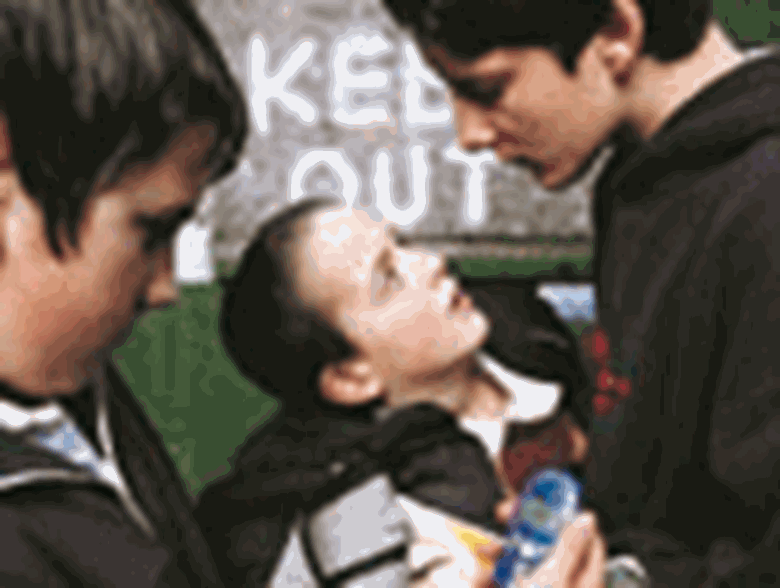Analysis: Bullying - Crackdown begins on cyberbullying
Tuesday, September 25, 2007
Children's Secretary Ed Balls has launched an online campaign and guidance to crack down on cyberbullies - those who use text messages and emails to torment others. But will these new measures prove to be enough, asks Tristan Donovan.

Johnny is a victim of cyberbullying. His personal blog is cluttered with abuse. "Wanting to be our friend," one poster taunts. "In your dreams tossa. If I see you tomorrow I'm going to take your lunch money and kick your skinny butt."
His instant messages are little better picking up on an online video of Johnny singing. "The award for the ugliest male singer goes to ...", Ricky messages Johnny.
Luckily Johnny's not real - he is the face of an online ad campaign designed to stamp out cyberbullying. Launching the government campaign last week Children's Secretary Ed Balls promised there would be "no hiding place for cyberbullies".
Bullying that follows you home
"Cyberbullying is a particularly insidious type of bullying as it can follow young people wherever they go," said Balls. The online campaign, which points the finger at those who laugh with or support bullies as well as the bullies themselves, is also backed by new guidance for schools on dealing with technology-based bullying.
The guidance is much needed if research into the problem is anything to go by. A study for the Department for Children, Schools and Families estimated one in three 12- to 15-year-olds had been on the receiving end of cyberbullying. Another, for the Anti-Bullying Alliance, suggested the figure was one in five or one in four. Either way it's a sizeable chunk of the school population.
The charity ChildNet International developed the guidance with help from a government taskforce bringing together teachers' unions, mobile phone and internet firms and various organisations that work with children and young people.
The focus of the guidance is on preventing bullying. Schools are encouraged to put a specific staff member in charge of combating cyberbullying and to educate pupils about the effects it can have. The guidance also urges head teachers to draw up acceptable use policies for pupils on using school computers.
Emma-Jane Cross, chief executive of the charity Beatbullying, is pleased with this focus. "We are delighted that there is a focus on prevention in the guidance. Beatbullying believes strongly that the best way to beat bullying is through prevention."
One school already having success at preventing cyberbullying is Breeze Hill School in Oldham. The secondary school has put spy software onto all its computers to detect possible cyberbullying incidents.
Peter Hartley, the school's assistant head teacher, says the approach was an immediate success. "Very early on we caught people and quite quickly the word spread throughout the school and now the pupils know they are being watched," he explains.
The spy software checks for key words that might be used by bullies and acts by shutting down the computer and alerting teachers. The software also records the time of the incident and which computer it happened on - enough information, says Hartley, to identify the pupil involved.
"It wasn't expensive and has been very effective," he adds. The school is currently planning to add words in Urdu and other languages to the system. "Around 80 per cent of our pupils have English as a second language, so we're updating the list of words for the software to look out for with things like swear words in Urdu," says Hartley.
Keeping the evidence
As well as addressing how to stop bullies, the government's guidance also includes advice on responding to incidents of cyberbullying. It suggests encouraging bullied pupils to keep examples of malicious texts or emails they receive to help with any investigations and that schools approach internet service providers or confiscate mobile phones to try to stop abusive content spreading.
Teachers should also advise pupils being bullied on ways to stop it happening again such as blocking people or removing people from lists of friends on social networking sites like Bebo and MySpace. But while the guidance has been welcomed, the need for the government to ensure it is applied effectively remains.
"As good as the guidance is, parents, teachers and young people will still need the assurance that when a complaint is made to a (internet) provider, offensive material will be removed," says Steve Sinnott, general secretary of the National Union of Teachers. "I urge the government and providers to monitor closely the effectiveness of the guidance to see if any further changes in the law are needed."
Cross agrees the government must now push to get schools using the guidance. "Although the guidance is important, the government cannot just wash its hands at that. We need to see the government fund bullying prevention schemes like peer mentoring in every school across the country," she says. "It is important to remember that cyberbullying is just the tip of the iceberg. It's what we don't see posted up on the internet that worries us most. At least if bullying is posted online we have a digital fingerprint to follow."
SAFE TO LEARN
- The cyberbullying guidance is part of a set of advice on tackling bullying in school released by the Department for Children, Schools and Families last week
- The set of advice, entitled Safe to Learn, also includes the first ever guidance document produced by the government on dealing with homophobic bullying
- In addition to the homophobic and cyberbullying guidance, Safe to Learn includes advice for schools on dealing with bullying more generally
- All the guidance is available from www.teachernet.gov.uk.




